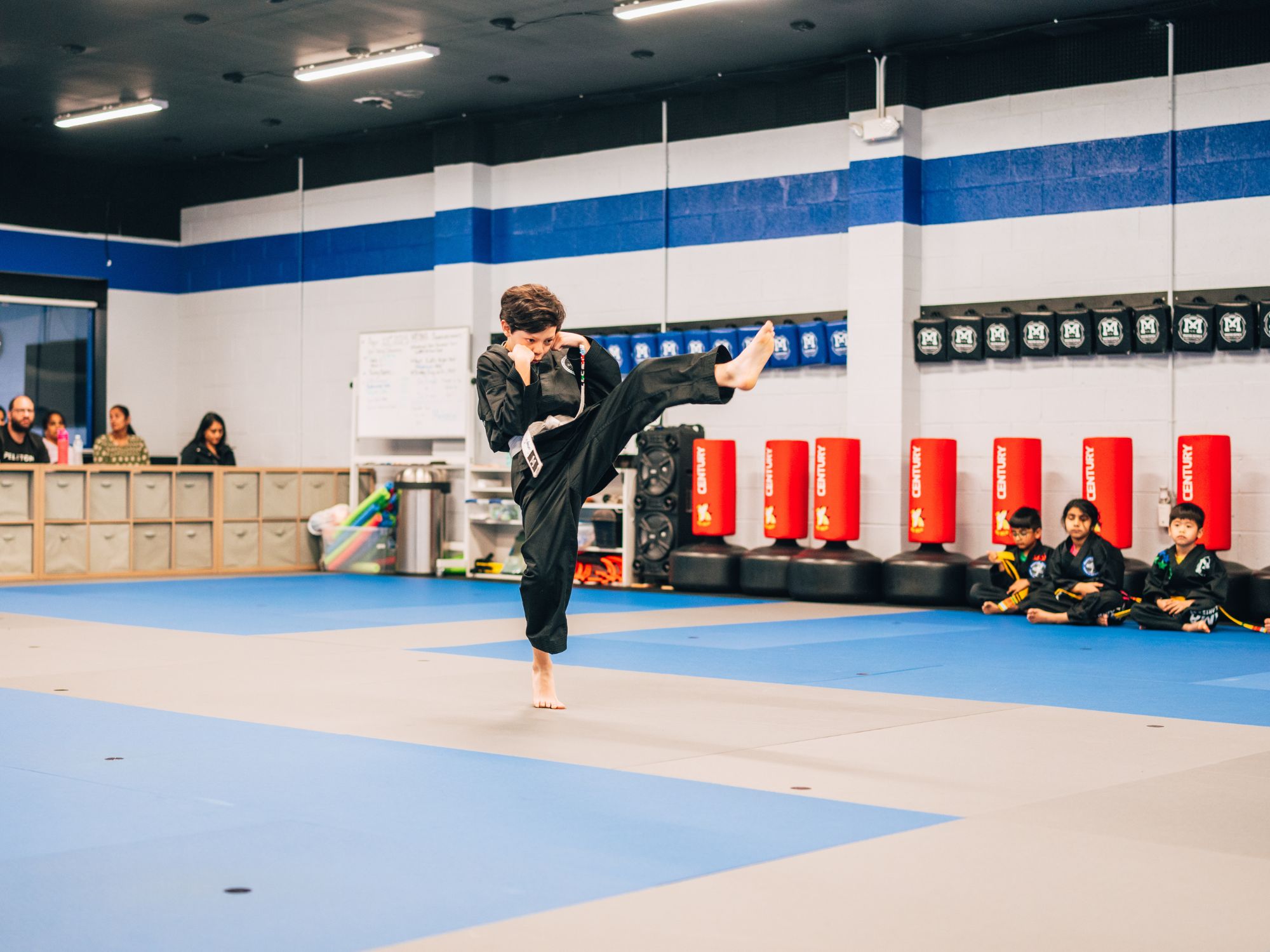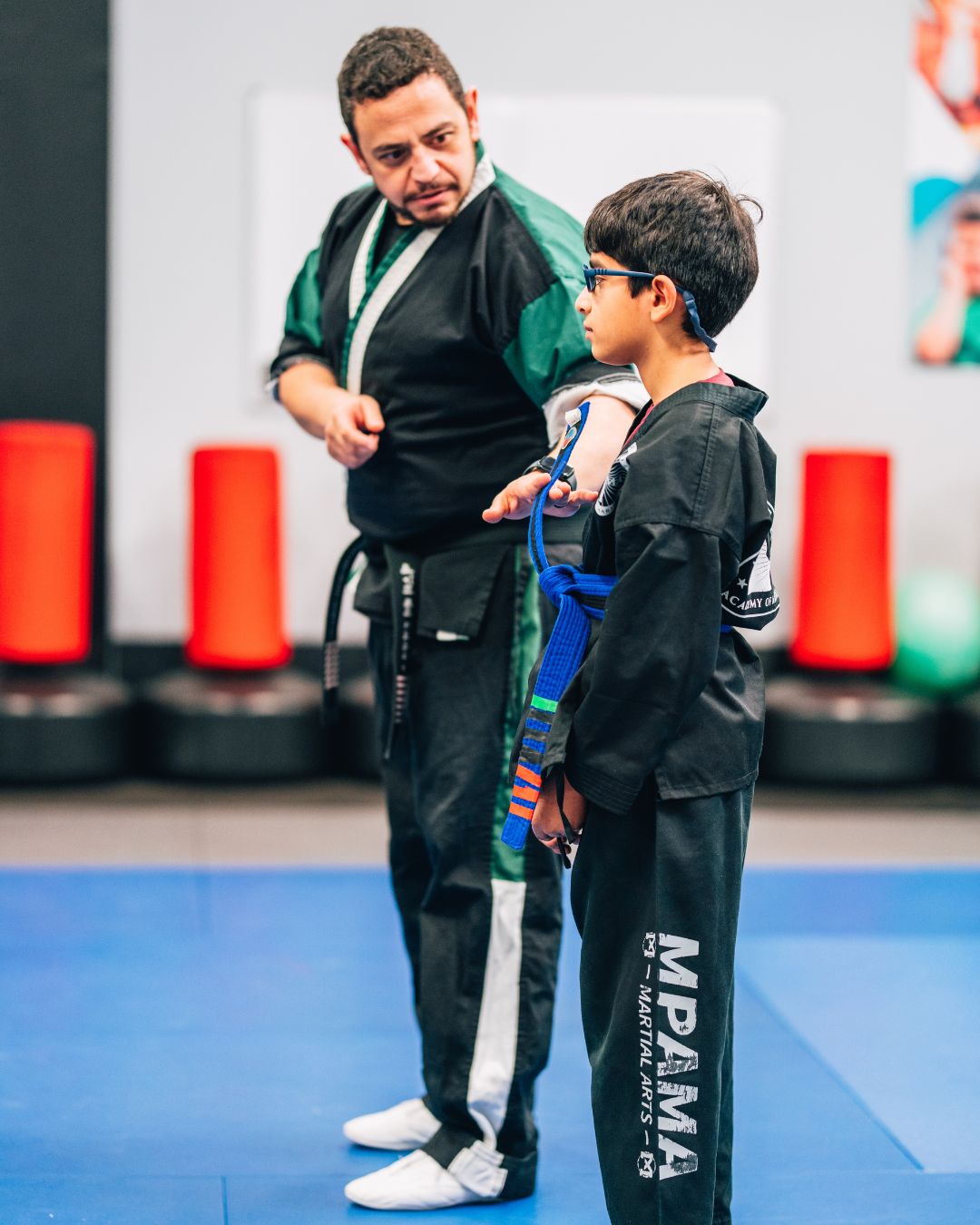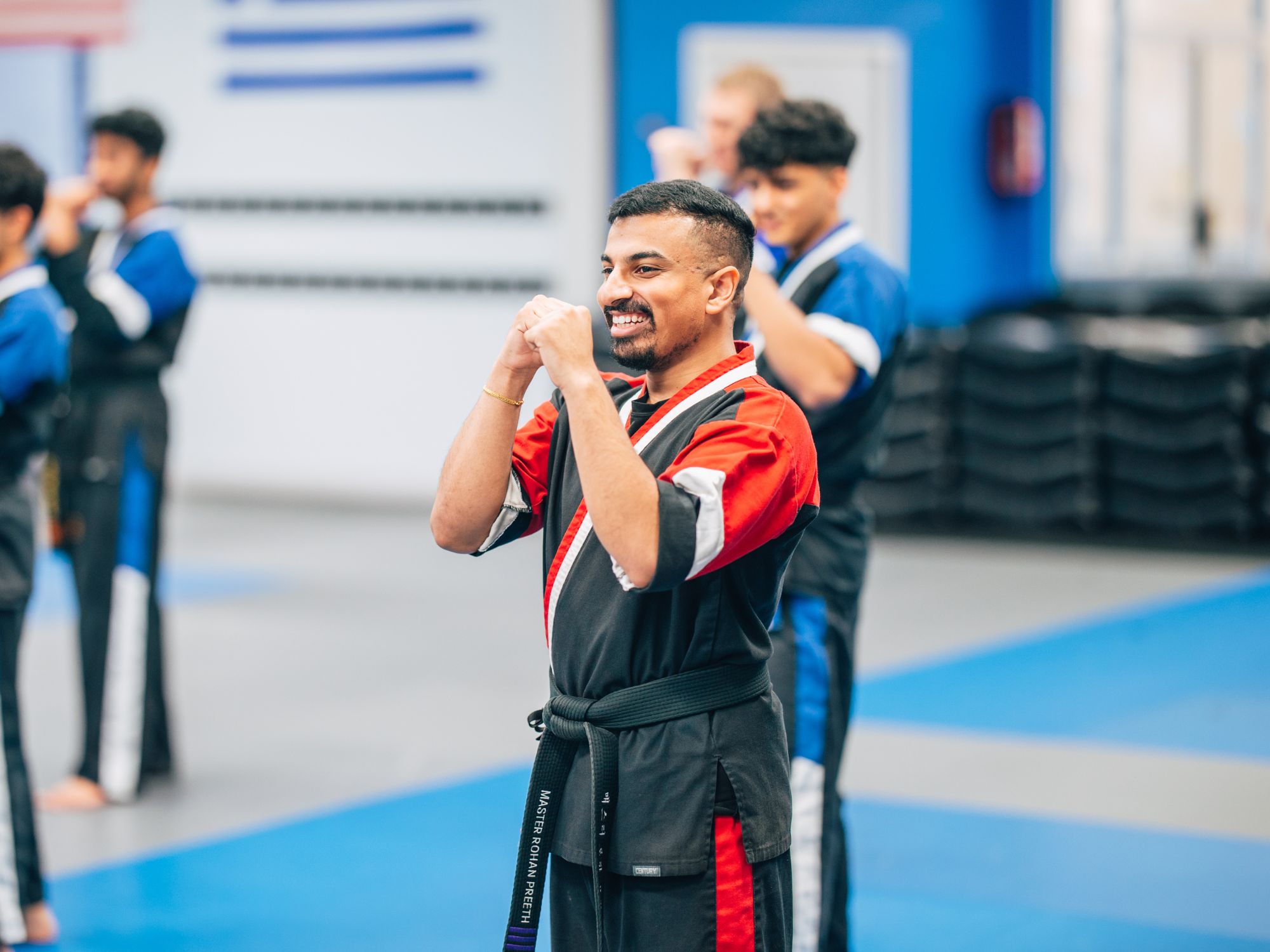Every school year comes with new expectations—higher-level coursework, more homework, and greater personal responsibility. For this reason, setting and reaching goals isn’t just a helpful skill for students; it’s essential. Martial arts training provides a structured environment where goal-setting isn’t an occasional activity but a built-in part of the process. This regular practice of setting, reviewing, and achieving goals directly supports students’ academic growth.
Let’s take a deeper look at how training in martial arts helps kids realize and unlock their full academic potential through goal-setting:
Measuring Progress
In martial arts, success isn’t just limited to earning the next belt. Students learn to track progress through small improvements, such as stronger stances, faster reactions, or better focus. This habit of measuring growth rather than waiting for the “final result” becomes an important tool in school. Instead of being overwhelmed by a big project or discouraged by one test score, they learn to notice steady progress and use it to stay motivated. Through training, martial artists understand that success doesn’t happen overnight, but is rather built through many small improvements every day. This approach makes long-term goals feel achievable and less intimidating.

A white belt student shows off his kicks during his first Belt Test.
Building Resilience
Constructive criticism is a constant in martial arts—whether it’s an instructor correcting a stance or a partner helping refine technique. Students quickly learn that feedback isn’t personal; it’s a tool for improvement. In academics, this same mindset allows them to accept teacher feedback on essays, assignments, or test performance without frustration. Martial artists recognize that there is no “perfect,” and use that truth as motivation to constantly look for ways to improve. Rather than giving up after setbacks, martial arts students develop resilience, using feedback to adjust their approach and stay on track with their goals.

Master Peter chats with a blue belt student during a Belt Test speech.
Time Management
Martial arts training requires commitment outside of school hours, which naturally teaches students how to balance responsibilities. Students who consistently attend classes learn how to prioritize: finishing homework earlier, managing free time better, and setting aside time to practice their craft. Students learn that they must take responsibility, and set aside some of their own personal time if they truly want to succeed. This skill is critical during the school year, when academic success depends not only on setting goals but also on managing time effectively to reach them.

A senior instructor smiles during a team training session.
The MPAMA Way
At MPAMA, we do more than teach martial arts—we actively help students apply what they learn on the mat to their school life. Our instructors encourage students to set both short-term and long-term goals, then revisit them regularly to check progress. We emphasize personal accountability and celebrate progress both in training and in academics. By working closely with families, we ensure that the lessons learned in martial arts classes carry over into the classroom, giving our students a clear advantage in reaching their academic goals.
Conclusion
Martial arts training gives students more than physical skills, it helps them become better learners. By learning to track progress, accept feedback, and manage their time, students gain the tools they need to set meaningful goals and follow through with them during the school year. At MPAMA, we’re proud to be part of that journey, guiding students not only toward martial arts success but toward academic achievement and personal growth as well!
Master Peter’s Academy of Martial Arts provides top-notch martial arts training for kids, teens, and adults in Dayton, South Brunswick, Monmouth Junction, Kendall Park, Princeton, Cranbury, East Windsor, Monroe, Jamesburg, Robbinsville, and Bordentown.








